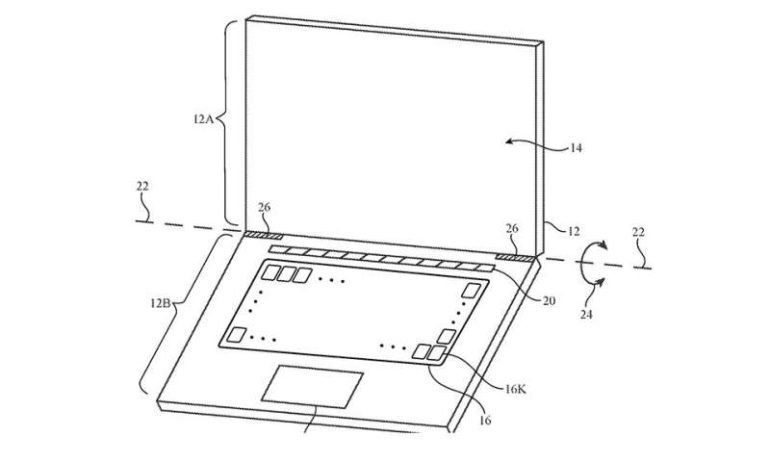Apple may be preparing to reinvent the keyboard.
In a patent filing approved Tuesday just under the U.S. Patent and Trademark Office filing deadline for 2020, Apple describes a keyboard whose keys would adapt to the task at hand.
The standard alphanumeric layout, for instance, could be transformed into a task-specific display in which keys could instead be used to execute functions. Audio recording enthusiasts could convert their keys into triggers that adjust volume, speed and various special effects. Photo editing programs could assign tools to individual keys and multi-key combinations.
The patent indicates modifiable key functions would be indicated by “dynamic labels.” These labels, according to a summary posted by patentlyapple.com this week, “may be generated using dynamically reconfigurable labels displaying components such as organic light-emitting diode displays with arrays of pixels, electrophoretic displays with arrays of pixels, or other pixel arrays.”
Currently, users can insert silicon placemats atop their keyboards indicating specialized software functions using key combinations. But some complain that the mats generate an unnatural feel when typing, that they must press harder on the keys and that they cannot type as fast with the covers.
Apple’s proposed dynamic keys will provide visual, and possibly tactile, feedback without diminishing the normal typing experience.
The dynamic keys may be used not only with various work tasks but with games as well. The customizable keyboards would instantly adjust to the required properties of each game.
Another practical application would be allowing users to swap keyboard languages from English to, for instance, Chinese or Hebrew.
The keys, according to patentlyapple.com, could be composed of glass, ceramic, polymer or sapphire.
The patent was filed under the oddly worded label: “Electronic devices having keys with coherent fiber bundles.”
Apple files hundreds of patents each year, many of which never see the light of day in practice.
Apple has focused its attention on keyboards a number of times over the years. Its introduction in 2015 of “butterfly” keys on MacBooks, which abandoned the scissors-like structure long used beneath each key, was greeted with a lack of enthusiasm. Users complained that keys got stuck, some generated unintended multiple presses and others didn’t respond at all. Apple continued using the keyboard until 2019 despite large numbers of consumer complaints.
One creative user known for writing a song daily for more than a decade wrote a song parody of the keyboard problem in 2017 titled, “I Am Pressing the Spacebar and Nothing Is Happening.”
A lawsuit was filed against Apple in May 2019 and Apple, following an apology to affected users, initiated a repair program free of charge to all MacBook users.
In November, Apple received a patent to bring Force Touch to the MacBook Touch Bar. Force Touch uses sensors to analyze click pressure and determine which finger is being used. The keyboard performs differing functions depending on the finger used and pressure applied. It employs a Taptic Engine to provide physical feedback to the user through vibrations.
A patent was also issued this year for an Apple keyboard that attaches to a portable device magnetically.
Apple may bring Force Touch to Macbook’s Touch Bar
More information:
www.patentlyapple.com/patently … ge-of-languages.html
2020 Science X Network
Citation:
Apple patents keyboard with dynamically changing key functions (2020, December 31)
retrieved 31 December 2020
from https://techxplore.com/news/2020-12-apple-patents-keyboard-dynamically-key.html
This document is subject to copyright. Apart from any fair dealing for the purpose of private study or research, no
part may be reproduced without the written permission. The content is provided for information purposes only.



